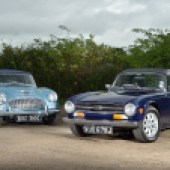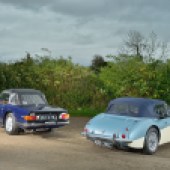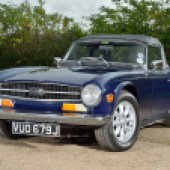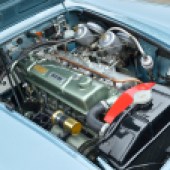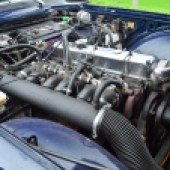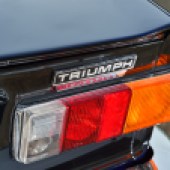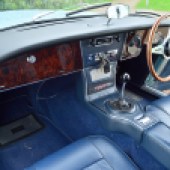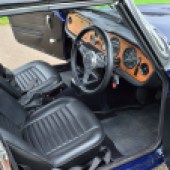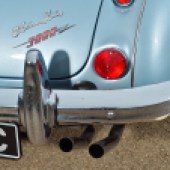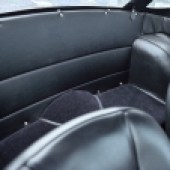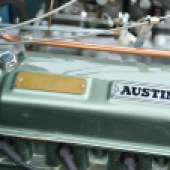The Triumph TR6 and Big Healey typify the no-nonsense traditional British sports car – but which is the winner as a classic?
Words: Nigel Clark Images: Matt Woods
When Donald Healey chose to fit a six pot motor into his four cylinder Austin Healey 100/4 chassis then follow up by enlarging it to a full three litres, he had a winner. The Austin Healey 3000 was the undisputed king of the big British sports cars for most of the Sixties. The recipe was simple: glamourous drop-top styling, sufficient space inside for two, with a beefy straight six cylinder power unit up front driving through the rear wheels.
With their ‘Put your foot down – and live’ advertising strapline, Austin Healey were selling performance and lifestyle for the Swinging Sixties, and the firm did so very effectively, backed up by some notable rallying accomplishments. But no market leader is immortal and by 1967 the king of the Brit’s styling was dated and production was becoming uneconomic. In December of that year, after a run of eight years, the Austin Healey 3000’s reign was over.
The king may have left the stage but the big front engine, rear wheel drive sports car formula remained popular and relevant. MG tried the recipe with their short-lived six pot MGC and Triumph’s TR5 also briefly challenged for the crown. However, it wasn’t until Triumph launched the TR6 in 1969 that we had another serious contender as ‘king of the big Brits’.
Triumph offered the same formula of six cylinder brawn powering the rear wheels, in a two seater convertible body shape that seemed bang up to date at the dawn of the Seventies. A seven year production run with huge trans-Atlantic sales suggests the TR6 may well have assumed the Healey’s crown. Fifty years later, we compare the two. Which one is the true king of the big British sports cars, and which offers the best classic car ownership experience today?
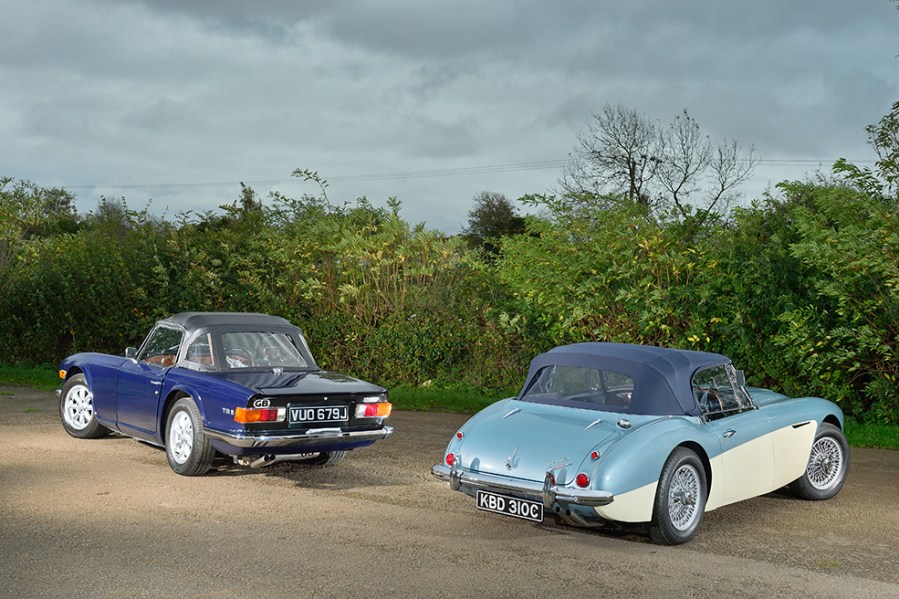
Austin Healey 3000 Mk3
Right from its launch as the four cylinder 100/4 in 1953, the Big Healey carved a huge presence in the British sports car market. Born out of Britain’s ‘export or die’ manufacturing strategy following the Second World War, Leonard Lord at Austin seized on Donald Healey’s two seater prototype as the opportunity for his organisation to grab a large slice of the lucrative American sports car pie.
Together, Austin and Healey continuously developed the rather basic early model throughout its lifespan, adding a 2.6 litre six cylinder motor in 1956 and ultimately a full three litre engine from 1959, creating the Austin-Healey 3000 which is our contender today. Along the way, creature comforts improved with better seats and wind up windows, extra chrome was added and safety was improved with disc brakes. The Austin-Healey 3000 was finally dropped from production in 1967, after almost 43,000 examples had been built. Over 90% of production was exported to the United States, still providing a large pool of cars to this day, with many returning across the Atlantic to become restoration projects for new owners.
Mainly due to the policy of continuous development, Austin-Healey 3000s were sold in numerous different specifications, denoted by two letter codes. In brief, the 3000 Mark 1 and Mark 2 were available as a BN series 2-seat roadster or BT 2+2 convertible. From 1963, the Mark 3 was available in Phase 1 and Phase 2 variants, all as BJ coded 2+2 convertibles. It pays to do a little homework before diving into the market, just to know what you are buying and avoid surprises.
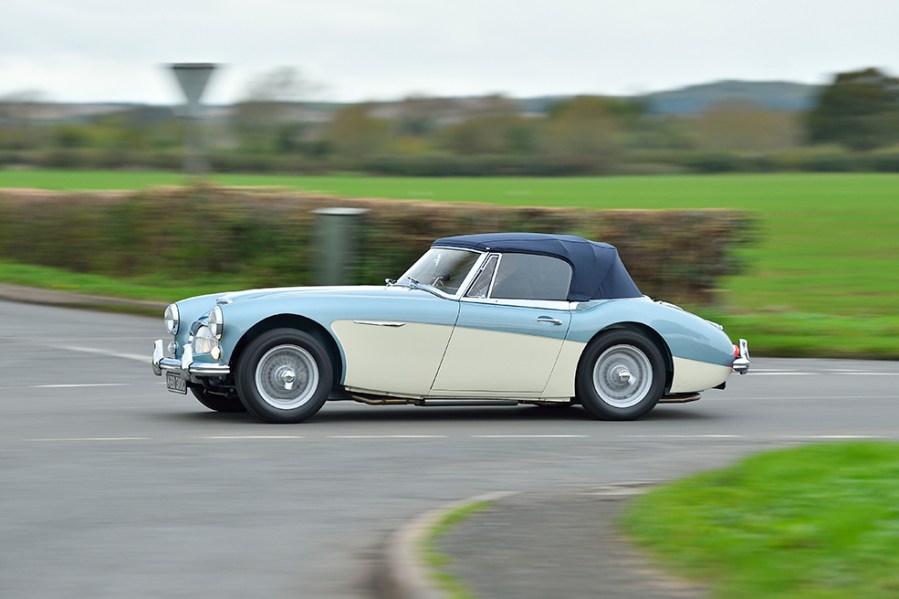
The underpinnings of the Big Healey consist of a strong steel chassis with cruciform bracing, wishbone front suspension and a leaf-sprung rear axle at the rear. All 3000 models were fitted with front disc brakes and all had cam and peg steering boxes. Under the bonnet, BMC’s C-Series engine was a tough lump of cast iron, fed by twin or even triple SU carbs and good for a genuine 150bhp in the later versions. Although equipped with four forward gears, Big Healey drivers should know how to double-declutch as only third and fourth gears benefited from synchromesh.
The beautifully styled curves of the Big Healeys hide an unusual construction. While the central body tub including floors and bulkhead are made of steel, aluminium alloy shrouds are fitted front and back, onto which the steel wings hang. These shrouds can be the source of serious electrolytic corrosion and require particular skill during restoration, adding to the cost of bringing a project car back to full health. It pays to take an expert familiar with this construction along to inspect a prospective purchase.
Nick Stephens acquired his Big Healey in 2010 as a wreck, albeit with a good straight chassis and decent shrouds. He took the car to respected experts JME Healey in Warwick, who carried out a 2 year full restoration, creating the splendid example seen in our photo shoot. Nick’s car has been re-imported from the USA, nothing unusual about that, except that it returned to the UK in 1968, when it was converted to right hand drive. Asked about his experience of Healey ownership, Nick says ‘I’ve always loved the style of the Big Healey. It’s an exhilarating driving experience, it needs to be properly driven and can be tail-happy in the wet’. He found the original steering wheel didn’t allow for his tall frame so has fitted a 14” diameter replacement which he says ‘feels a bit heavy at low speeds’. His car has been very reliable since restoration five years ago and he likes to use it as much as possible, though by his own admission, the ride can be rather harsh on long journeys.
Ease behind the steering wheel and there’s a real sense of occasion in the cockpit with figure-hugging bucket seats up front and space enough for tall drivers. The cramped rear seat area is suitable only for infrequent use. On the move, the engine and the view down the long bonnet dominate the senses. The engine provides a glorious six-pot note, with bucket-loads of torque meaning there’s urgent acceleration from little more than 20mph in top gear. However the suspension is harsh; the rear leaf springs have limited travel and any unevenness in the road surface is transferred through the seat bases to the occupants. Such an unforgiving ride may have been acceptable in the Fifties but it can cause fatigue on longer journeys. Let’s not be too critical about a single weakness though, the whole package of styling, presence and muscular performance is magnificent. Long live the king!
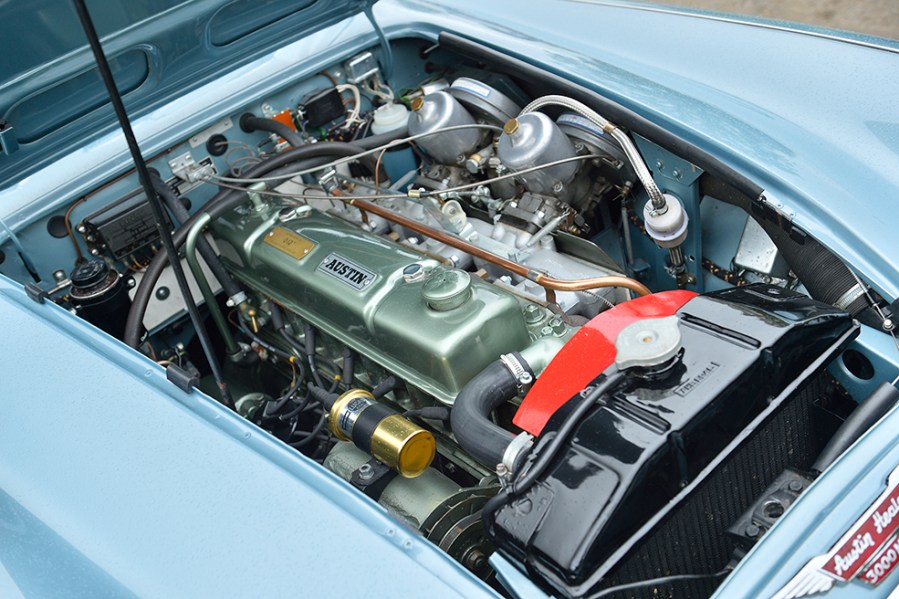
Triumph TR6
In the Fifties and Sixties, the Big Healeys and Triumph’s TR range were competing head-to-head in the same big sports car market segment; naturally they have a lot in common. Like the Healey, the Triumph was subject to a policy of continual upgrading, leading from a four cylinder starting point to a powerful six cylinder conclusion. Arguably Triumph took the development further than Healey, adding more extensive changes in body style, fully independent suspension and even petrol injection to the mix.
The TR range also started out in 1953 as the four pot TR2 but Triumph waited much longer, until the launch of the TR5 in 1967, to add the all-important extra cylinders. The ‘5 was merely a stop-gap. Although technically advanced under the skin, its softly rounded Michelotti-designed body looked dated. By early 1969, the TR6 was in the dealers’ showrooms, with a brand new, squared-off look courtesy of the Karmann design house in Germany. This fresh style was sufficiently contemporary to last until production finished in 1976.
The TR was constructed on a strong chassis, under a conventionally steel body. At the front end there was twin wishbone suspension with coil springs and telescopic dampers. Triumph’s trailing arm, coil-sprung independent suspension took care of the rear end, offering plenty of well-controlled travel. Steering was via a precise rack and pinion setup and front disc brakes provided decent stopping power. The TR6’s suspension and steering were therefore well ahead of the Big Healey, not too surprising as the designs were separated by ten years of development.
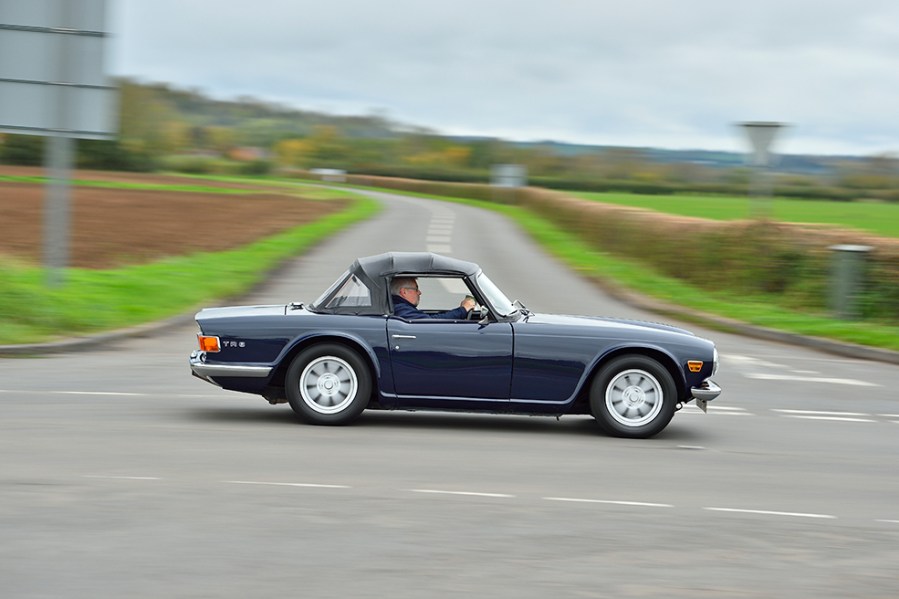
Under the bonnet innovation continued. Already stretched to reach 2.5 litres, the engine needed more power but another hike in capacity wasn’t feasible. To boost power, Triumph fitted a racey camshaft and Lucas petrol injection. This injection system, formerly the preserve of Formula One racers and upmarket Maseratis, was both a strength and a weakness, as teething troubles led to a reputation for unreliability. Today, the snags have been solved and experts can fix the once-problematic injection; maintaining the PI system is well within the grasp of experienced DIY mechanics too.
Our photo shoot car today is owned by Mark Hellings, who acquired it five years ago as an almost finished project. ‘I bought the car from a local specialist classic garage I’ve known for years’ says Mark. ‘It was sitting dusty and neglected in a corner but really didn’t need much more than a good clean and recommissioning to get back on the road’. Since then it’s been reliable, used for weekends away, holidays in France and TR Register events. ‘It’s been a joy to own’ Mark adds, ‘my wife and I often end up arguing over who will have the keys, we both love driving it that much’.
Inside the TR, its seats are supportive, with enough adjustment for longer legs. The big speedo and tacho are dead ahead in the walnut dash, with four minor gauges in the centre. It’s a pleasing layout and a comfortable cabin. Start up and again, we’ve got the distinctive six pot purr, although the fuel injected tickover is lumpier than the ever so smooth Healey. Moving off, the clutch is heavy and so is the steering, though it soon lightens up as we gather speed. The engine smooths out and like the Healey, will pull with gusto from almost any speed.
Steering is sharp and though cornering gives an initial feeling of understeer, the TR handles in a pleasantly neutral manner. But it’s the comfortable ride that stands out. With independent coil-sprung suspension all round, the TR holds the road well, simultaneously protecting its occupants from all but the very worst road surfaces. The combination of relaxed power delivery, decent handling and supple suspension make long distance driving a pleasure.
The TR6 shows considerable dynamic advantages over the Big Healey, marking it out as a more modern design and a worthy successor as king of the big British sports cars. But given a few years more development, what could Healey have achieved? Sadly, we will never know.
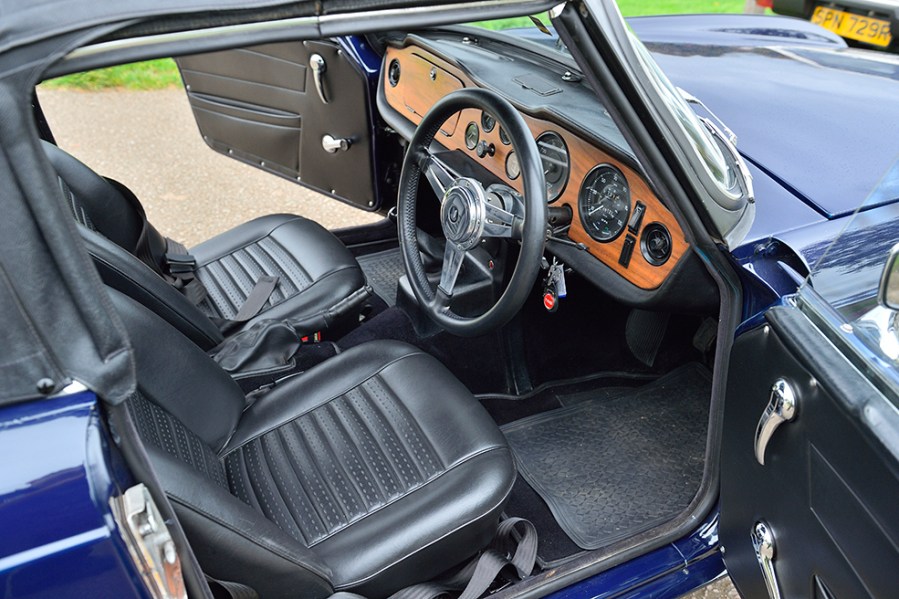
Triumph TR6 vs Austin-Healey 3000: our verdict
For sheer glamour, the curves and chrome of the Big Healey are hard to beat, outshining the TR’s more aggressive profile. Straight line performance is near identical but the TR6 wins dynamically due to its sharper handling and supple ride.
The TR6 offers drivers plenty of fun for their money. If head-turning looks matter most, go for the Healey – but be prepared to pay a hefty price!
If you are in the market for either a Big Healey or a TR6, the good news is both cars survive in decent numbers with plenty for sale at any moment in time. To this extent, it’s a buyer’s market and if you are not completely happy with a prospective purchase, walk away and continue your search, as a better car will soon turn up.


